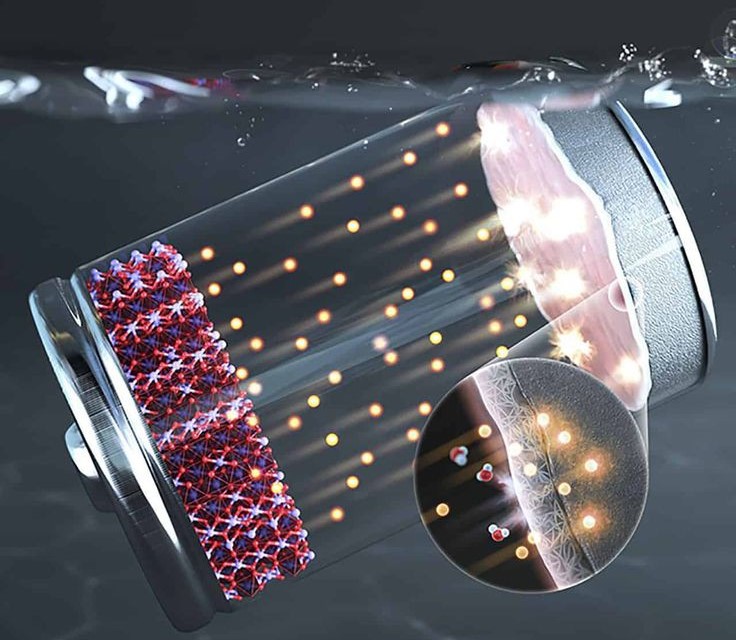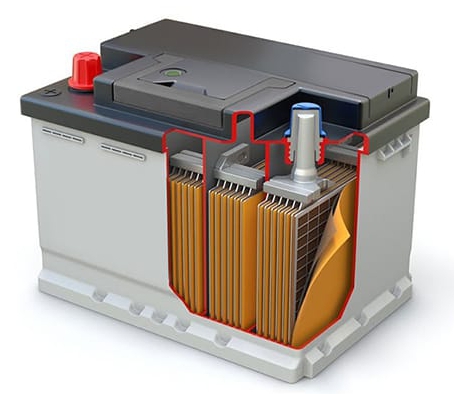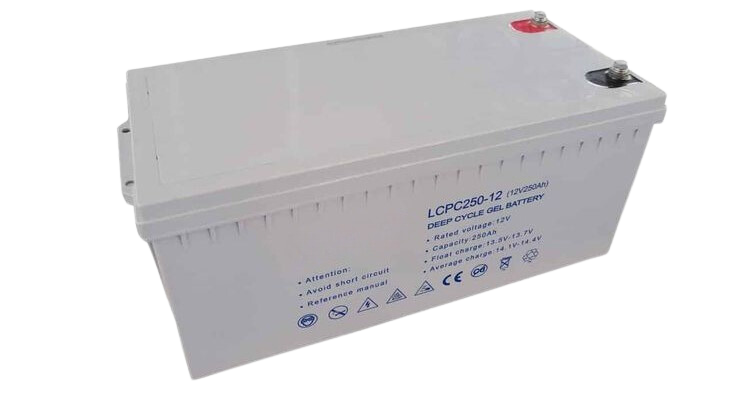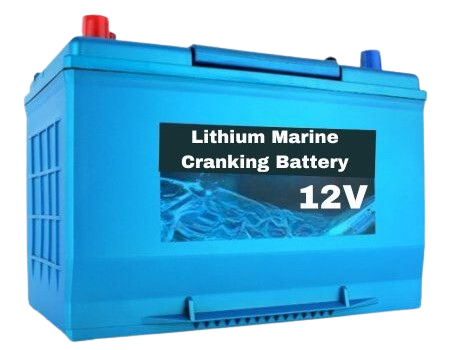Dry Cell Batteries
Contents
- 1 Dry Cell Batteries
- 2 Types of Dry Cell Batteries
- 3 The Science Behind Dry Cell Batteries
- 4 Diverse Chemistry in Dry Cell Batteries
- 5 Advantages of Dry Cell Batteries
- 6 Environmental Considerations
- 7 Battery Life and Discharge
- 8 Embracing Rechargeable Dry Cell Batteries
- 9 Practical Tips for Battery Maintenance
- 10 Common Myths About Dry Cell Batteries
- 11 How to Safely Dispose of Dry Cell Batteries
- 12 Innovations in Dry Cell Technology
- 13 The Future of Dry Cell Batteries
- 14 Conclusion
- 15 FAQ

In our daily lives, we often take for granted the little powerhouses that keep our gadgets running smoothly. From your TV remote to the flashlight in your emergency kit, dry cell batteries are the unsung heroes of the portable energy world. In this blog post, we’ll look at these unassuming power sources, exploring what makes them essential and how they work their magic.
What Exactly Are Dry Cell Batteries?

Dry cell batteries are compact, portable devices that store and release electrical energy. Unlike traditional wet cell batteries, they don’t contain liquid electrolytes, making them safe, convenient, and versatile for numerous applications.
The Key Components
A typical dry cell battery comprises three main parts:
- An anode (the negative terminal)
- A cathode (the positive terminal)
- An electrolyte
These components are separated by a porous separator and enclosed in a protective casing, usually metal or plastic.
Types of Dry Cell Batteries

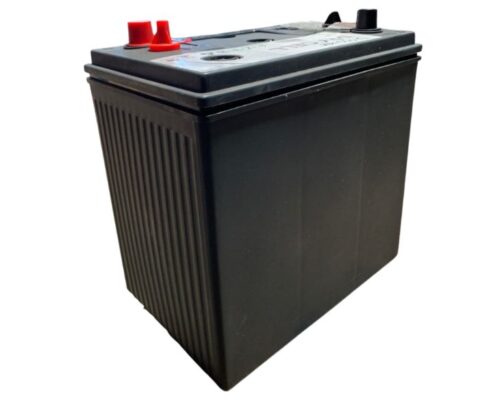
Dry cell batteries come in various types, each tailored for specific purposes:
Alkaline Batteries:
Known for their long-lasting power, these are commonly used in everyday devices like TV remotes and digital cameras.
Lithium Batteries:
Lightweight and high-energy lithium batteries are often found in watches, calculators, and other small electronics.
Zinc-Carbon Batteries:
These economical batteries are suitable for low-drain devices such as wall clocks and remote controls.
Nickel-Metal Hydride (NiMH) Batteries:
Rechargeable NiMH batteries are perfect for devices that need frequent power top-ups, like cordless phones and game controllers.
The Science Behind Dry Cell Batteries
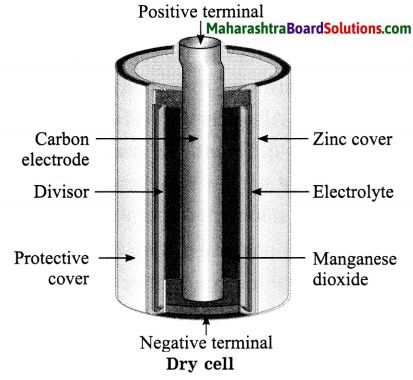
Dry cell batteries work through a chemical reaction within the battery. This reaction generates electrons, creating an electric current that flows from the anode to the cathode. The separator between these terminals allows the electrons to move while preventing the anode and cathode from directly interacting with each other.
Diverse Chemistry in Dry Cell Batteries
Different types of dry cell batteries use distinct chemical compositions. For example, alkaline batteries feature zinc as the anode and manganese dioxide as the cathode, with an alkaline electrolyte. On the other hand, lithium batteries utilize lithium as the anode and various cathode materials. This chemical diversity is what makes each battery type unique.
Advantages of Dry Cell Batteries
Dry cell batteries are everyday heroes that power our remote controls, flashlights, toys, and more. They offer several advantages that make them an essential part of our lives.
Portability:
Dry cell batteries are compact and easy to carry. You can use them in devices you can take anywhere, from your TV remote to your digital camera.
Long Shelf Life:
One of the best things about dry cell batteries is their ability to stay ready for action for a long time. You can stock up on them; they’ll still work when needed.
Various Sizes:
Dry cell batteries come in a range of sizes to fit different devices. Whether it’s a tiny button battery for a watch or a giant flashlight, you can find the size you need.
Versatile Applications:
These batteries power many devices, from everyday household items to medical equipment, making them incredibly versatile.
Environmental Considerations
While dry cell batteries are convenient, they also have some environmental concerns. Many dry-cell batteries contain hazardous substances such as mercury and cadmium. It’s crucial to dispose of them properly to prevent environmental contamination. Many regions have recycling programs in place to address this issue.
Battery Life and Discharge
The lifespan of a dry cell battery depends on several factors, including the type of battery, the energy requirements of the device it powers, and usage patterns. As a battery discharges, its voltage gradually decreases. Eventually, it will need replacement or recharging.
Embracing Rechargeable Dry Cell Batteries
Rechargeable dry cell batteries, like NiMH and lithium-ion batteries, are designed for multiple uses. They are a sustainable alternative to single-use batteries, saving money and the environment in the long run.
Practical Tips for Battery Maintenance

To maximize the performance and safety of your dry cell batteries, consider these tips:
- Store batteries in a cool, dry place to prolong their shelf life.
- Remove batteries from devices that won’t be used for an extended period to prevent leakage or corrosion.
- Always follow the manufacturer’s recommendations regarding charging and usage.
- Avoid puncturing or exposing batteries to extreme temperatures, as this can be dangerous.
Common Myths About Dry Cell Batteries
Let’s debunk some common misconceptions about dry cell batteries:
Myth 1:
Storing batteries in the freezer extends their life.
False! Freezing can damage batteries and reduce their performance.
Myth 2:
Fully discharging rechargeable batteries before recharging is necessary.
Not true! It’s better to recharge them before they are empty to prolong their lifespan.
Myth 3:
Mixing different battery types is safe.
False! Mixing batteries can lead to uneven performance and potentially hazardous situations.
How to Safely Dispose of Dry Cell Batteries
Proper disposal of dry cell batteries is crucial for environmental safety. Here’s what you should do:
- Check local recycling programs or collection centers for battery disposal.
- Use battery recycling drop-off points or mail-in programs.
- Never toss batteries in the regular trash, as this can harm the environment.
Innovations in Dry Cell Technology

Battery technology is continuously evolving. Manufacturers are developing more efficient, eco-friendly, and longer-lasting dry-cell batteries to meet the growing demand for clean energy sources.
The Future of Dry Cell Batteries
With advancements in battery technology, we can anticipate even more compact and high-capacity dry cell batteries, reducing our reliance on disposable batteries and contributing to a greener future.
Conclusion
In conclusion, dry cell batteries are the unsung heroes of the energy world, making our lives more convenient and efficient. They might not grab the headlines, but their importance is undeniable. The next time you reach for the TV remote or switch on a flashlight during a power outage, remember these batteries’ quiet role in ensuring everything runs smoothly. With their portability, reliability, and versatility, dry-cell batteries are here to stay, quietly powering our modern world.
FAQ
Q1: What is a dry cell battery?
A dry cell battery is a type of battery that uses a paste electrolyte and is sealed in a case to prevent leakage. Unlike wet-cell batteries, dry-cell batteries do not contain free-flowing liquid electrolytes.
Q2: What are the common uses of dry-cell batteries?
Dry-cell batteries are widely used in everyday electronic devices such as flashlights, remote controls, toys, and gadgets. They are convenient, portable, and suitable for a variety of applications.
Q4: Are all dry-cell batteries the same?
No, various types of dry-cell batteries are designed for specific purposes. Common types include alkaline, zinc-carbon, and lithium batteries. Each type has different characteristics, such as capacity, voltage, and shelf life, making them suitable for different devices and applications.


